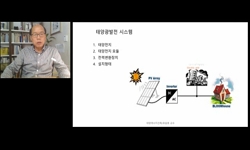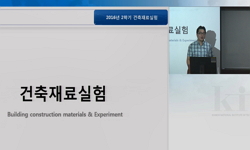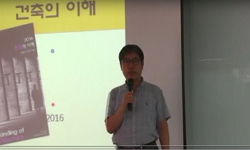(연구배경 및 목적) 최근 예술의 개념이 확장되면서 다원화되고 복합적인 현대미술의 흐름에 따라 전시공간 또한 작품을 감상하는데 있어 중요한 요소로 자리잡기 시작하였다. 전시공간 자...
http://chineseinput.net/에서 pinyin(병음)방식으로 중국어를 변환할 수 있습니다.
변환된 중국어를 복사하여 사용하시면 됩니다.
- 中文 을 입력하시려면 zhongwen을 입력하시고 space를누르시면됩니다.
- 北京 을 입력하시려면 beijing을 입력하시고 space를 누르시면 됩니다.

예술작품으로서 파빌리온 건축을 통한 전시공간의 확장에 관한 연구 -<젊은 건축가 프로그램>을 중심으로- = Study on Expansion of Exhibition Space through Construction of Pavilion as Work of Art - Based on Young Architects Program -
한글로보기https://www.riss.kr/link?id=A103351400
- 저자
- 발행기관
- 학술지명
- 권호사항
-
발행연도
2017
-
작성언어
Korean
-
주제어
아트 파빌리온 ; 전시공간 ; 현대미술 ; 건축 ; 공간디자인 ; Art Pavilion ; Exhibition Space ; Contemporary Art ; Architect ; Spatial Design
-
등재정보
KCI등재
-
자료형태
학술저널
- 발행기관 URL
-
수록면
179-190(12쪽)
-
KCI 피인용횟수
4
- DOI식별코드
- 제공처
-
0
상세조회 -
0
다운로드
부가정보
국문 초록 (Abstract)
(연구배경 및 목적) 최근 예술의 개념이 확장되면서 다원화되고 복합적인 현대미술의 흐름에 따라 전시공간 또한 작품을 감상하는데 있어 중요한 요소로 자리잡기 시작하였다. 전시공간 자체가 작품이 되고, 작품이 전시공간이 되는 등 20세기 현대미술의 대표적 전시공간의 모습인 화이트 큐브 전시형태를 넘어서 다양한 장르의 전시가 이루어지고 있다. 이러한 변화 속에서 현대미술 전시공간 개념의 변화에 따라 기존의 전시공간과 더불어 새로운 형태의 전시공간들이 등장하고 있다. 본 연구의 목적은 현대미술 전시공간 개념의 변화 속에서 미술과 건축의 결합에 따른 파빌리온 건축의 등장과 관람자가 마주하는 공간경험에 대한 새로운 유형의 전시공간의 확장을 연구함에 목적을 둔다. (연구방법) 본 연구에서는 전시공간의 개념의 변화와 예술작품으로서의 파빌리온 건축의 개념을 정립하고, 뉴욕현대미술관(MoMA)의 건축프로젝트인 `젊은 건축가 프로그램`을 중심으로 국제 네트워크를 맺고 있는 칠레 산티아고의 컨스트럭토(Constructo), 로마 국립 21세기 현대미술관(MAXXI), 터키 이스탄불 근대미술관(Istanbul Modern), 한국의 국립현대미술관(MMCA)를 통해 파빌리온 특성과 유형을 토대로 최근 경향을 분석하였다. 사례 분석 대상으로는 2014년 아시아 국가로는 처음으로 참여하게 된 국립현대미술관의 2014년-2016년 시행되었던 파빌리온을 연구대상으로 적용하여 다양한 관점의 분석을 통해 공간적 해석과 표현요소에 대해 연구하였다. (결과) 이러한 요소들을 통하여 사례를 분석한 연구결과 `젊은 건축가 프로그램`은 현대미술과 건축의 만남을 통하여 이들의 접점에서 미술작품을 일상의 공간으로 가져오며 예술과 삶의 긴밀한 관계를 재고하게 한다. 예술작품으로서의 파빌리온이 전시공간의 확장을 보여주는 요소를 네 가지로 정리 할 수 있다. 첫째, 새로운 공간경험에 대한 요구로 인한 파빌리온의 기능적 확장. 둘째, 관람적 특성의 변화에 따른 관람객 참여중심 공간으로의 체험적 확장. 셋째, 예술작품으로 인정되기 시작한 파빌리온에 대한 예술성에 따른 미학적 확장. 넷째, 물리적 공간을 넘어 개념적 접근을 통한 장소성의 확장을 들 수 있다. (결론) 현대미술에서의 파빌리온 건축프로젝트는 관람객 활성화와 더불어 새로운 현대미술의 개념을 제시하고 있음을 확인 할 수 있다. `젊은 건축가 프로그램`과 같은 예술작품으로서의 파빌리온 건축의 도입은 이것을 작품으로 바라보게 하며 감상의 대상을 전시공간 자체로 변화하게 했다. 오늘날의 전시공간의 의미는 공간의 경험 또한 작품의 일부가 되며 전시공간의 확장을 가져오게 한다. 이와같이 예술작품으로서의 파빌리온 이 새로운 전시공간의 시각으로 접근하는 후속 연구들이 지속되어야 할 것이다.
다국어 초록 (Multilingual Abstract)
(Background and Purpose) The concept of what constitutes “art” has expanded in recent years, and the trends in contemporary art have become more diversified and complex. As such, exhibition space has also become an essential element in appreciatin...
(Background and Purpose) The concept of what constitutes “art” has expanded in recent years, and the trends in contemporary art have become more diversified and complex. As such, exhibition space has also become an essential element in appreciating art. Exhibition spaces become a work of art in their own right, and the artwork becomes the exhibition space. Various genres of exhibitions beyond the general form of the white cube are being held to represent 20th century contemporary art in the context of its site of exhibition. Within this transformation, new forms of exhibition spaces are appearing in accordance to changes in the concept of what constitutes a contemporary art space. This study surveys the expansion of new exhibition spaces, especially the appearance of art pavilions that combine art and architecture, and the spatial experience of audiences. (Method) This study establishes the concept of pavilion architecture as a work of art and emphasizes possible changes to these spaces by analyzing current trends based on the attributes and features of pavilions like the National Museum of Modern and Contemporary Art (Seoul, Korea), Istanbul Modern, MAXXI (Rome, Italy), and Constructo (Santiago, Chile), which form an international network around the "Young Architect Program" of MoMA (New York, USA). The main subjects of this study are the spatial interpretation of audience members, and the expressive methods of designing exhibition spaces through different perspectives of analysis on the pavilions arranged at the National Museum of Modern and Contemporary Art (2014 to 2016), the first institution in Asia to participate in the program. (Results) The "Young Architect Program" brings works of art into everyday spaces through the rendezvous of contemporary art and architecture. Doing so also enables recollection on the intimate relationship between art and life. The pavilion exhibition space can be classified as a work of art according to three elements: the functional element of site-specificity and public concern, ability to use the space variably; aesthetic perspective of appreciating art spatially as the space itself is recognized as a work of art; and spatial interpretation based on the narrative, in accordance with the subjectivity of each pavilion. (Conclusion) It is confirmed that the pavilion construction project in contemporary art expands the audience while suggesting a new concept of contemporary art. The introduction of pavilion architecture as works of art, as in the Young Architect Program, has changed the exhibition space into both a work of art and the subject being viewed. The significance of exhibition spaces today includes the use of these spaces for creating a bond between the art and one`s spatial experience of it. On this account, a follow-up study is necessary to position the pavilion as the newest genre of exhibition space.
참고문헌 (Reference)
1 박상호, "현대미술작품과 전시 공간의 상관관계 분석에 관한 연구" 한국문화공간건축학회 (32) : 13-26, 2010
2 Yoon, Nanji, "현대미술의 풍경" Hangil Art 2005
3 민현준, "현대미술관 전시장의 군도형 배열에 관한 연구" 서울대학교 대학원 2013
4 김지혜, "소통의 장으로서의 미술관 아트 파빌리온에 관한 연구 : 서펜타인 갤러리 파빌리온과 MOMA PS1 파빌리온을 중심으로" 건국대학교 건축전문대학원 2013
5 안민영, "소규모 파빌리온 표피의 자연 생성적 디자인 특성에 관한 연구" 한국공간디자인학회 7 (7): 97-109, 2012
6 National Museum of Modern and Contemporary Art, Korea, "Young Architects Program 2016" MMCA 2016
7 National Museum of Modern and Contemporary Art, Korea, "Young Architects Program 2015" MMCA 2015
8 National Museum of Modern and Contemporary Art, Korea, "Young Architects Program 2014" MMCA 2014
9 Jung, Yeonsim, "Modern Space and Installation Art" ANC 2014
10 O'Doherty, Brian, "Inside the white cube:The ideology of the gallery space" Sigong art 2006
1 박상호, "현대미술작품과 전시 공간의 상관관계 분석에 관한 연구" 한국문화공간건축학회 (32) : 13-26, 2010
2 Yoon, Nanji, "현대미술의 풍경" Hangil Art 2005
3 민현준, "현대미술관 전시장의 군도형 배열에 관한 연구" 서울대학교 대학원 2013
4 김지혜, "소통의 장으로서의 미술관 아트 파빌리온에 관한 연구 : 서펜타인 갤러리 파빌리온과 MOMA PS1 파빌리온을 중심으로" 건국대학교 건축전문대학원 2013
5 안민영, "소규모 파빌리온 표피의 자연 생성적 디자인 특성에 관한 연구" 한국공간디자인학회 7 (7): 97-109, 2012
6 National Museum of Modern and Contemporary Art, Korea, "Young Architects Program 2016" MMCA 2016
7 National Museum of Modern and Contemporary Art, Korea, "Young Architects Program 2015" MMCA 2015
8 National Museum of Modern and Contemporary Art, Korea, "Young Architects Program 2014" MMCA 2014
9 Jung, Yeonsim, "Modern Space and Installation Art" ANC 2014
10 O'Doherty, Brian, "Inside the white cube:The ideology of the gallery space" Sigong art 2006
11 Barker, Emma, "Contemporary Cultures of Display" Artbooks 2004
12 Yoon, Nanji, "After Modernism" Nunbit 2002
13 Kim, Junggon, "A Study on the Planning Factors for Exhibition Space" 4 : 23-30, 2001
동일학술지(권/호) 다른 논문
-
무형문화유산의 공연예술 전시공간의 구현특성에 관한 연구
- 한국공간디자인학회
- 신은희 ( Eunhi Shin )
- 2017
- KCI등재
-
루이스 바라간 건축에 나타난 전이공간 접근요소의 특성에 관한 연구 -루이스 바라간의 제3시기 건축작품을 중심으로-
- 한국공간디자인학회
- 김민경 ( Minkyung Kim )
- 2017
- KCI등재
-
`열린 건축`으로 바라본 Nishizawa Ryue의 건축 특성 연구
- 한국공간디자인학회
- 박미옥 ( Miok Park )
- 2017
- KCI등재
-
디지털 아트를 활용한 전시공간의 의미전달 확장성에 관한 연구
- 한국공간디자인학회
- 정현지 ( Hyunji Jung )
- 2017
- KCI등재
분석정보
인용정보 인용지수 설명보기
학술지 이력
| 연월일 | 이력구분 | 이력상세 | 등재구분 |
|---|---|---|---|
| 2022 | 평가예정 | 재인증평가 신청대상 (재인증) | |
| 2019-01-01 | 평가 | 등재학술지 유지 (계속평가) |  |
| 2016-01-01 | 평가 | 등재학술지 선정 (계속평가) |  |
| 2015-06-01 | 학술지명변경 | 외국어명 : Journal of the Korea Intitute of the spatial design -> Journal of Korea Intitute of Spatial Design |  |
| 2015-01-01 | 평가 | 등재후보학술지 유지 (계속평가) |  |
| 2013-01-01 | 평가 | 등재후보 1차 FAIL (등재후보1차) |  |
| 2012-01-01 | 평가 | 등재후보학술지 유지 (기타) |  |
| 2011-01-01 | 평가 | 등재후보 1차 PASS (등재후보1차) |  |
| 2009-01-01 | 평가 | 등재후보학술지 선정 (신규평가) |  |
학술지 인용정보
| 기준연도 | WOS-KCI 통합IF(2년) | KCIF(2년) | KCIF(3년) |
|---|---|---|---|
| 2016 | 0.47 | 0.47 | 0.53 |
| KCIF(4년) | KCIF(5년) | 중심성지수(3년) | 즉시성지수 |
| 0.51 | 0.52 | 0.692 | 0.28 |





 KCI
KCI KISS
KISS






